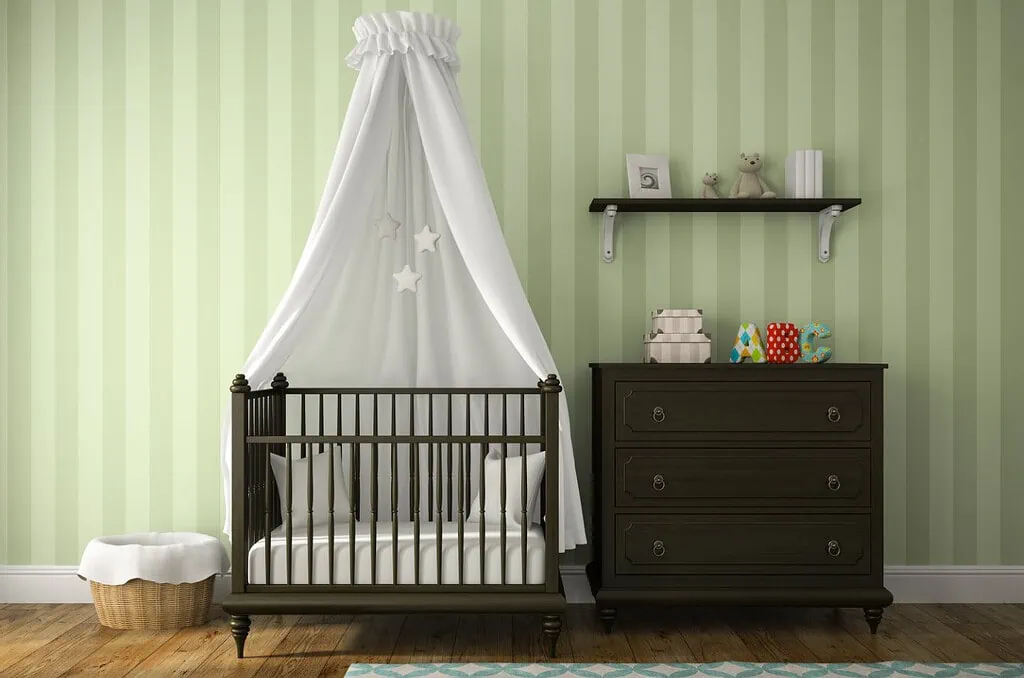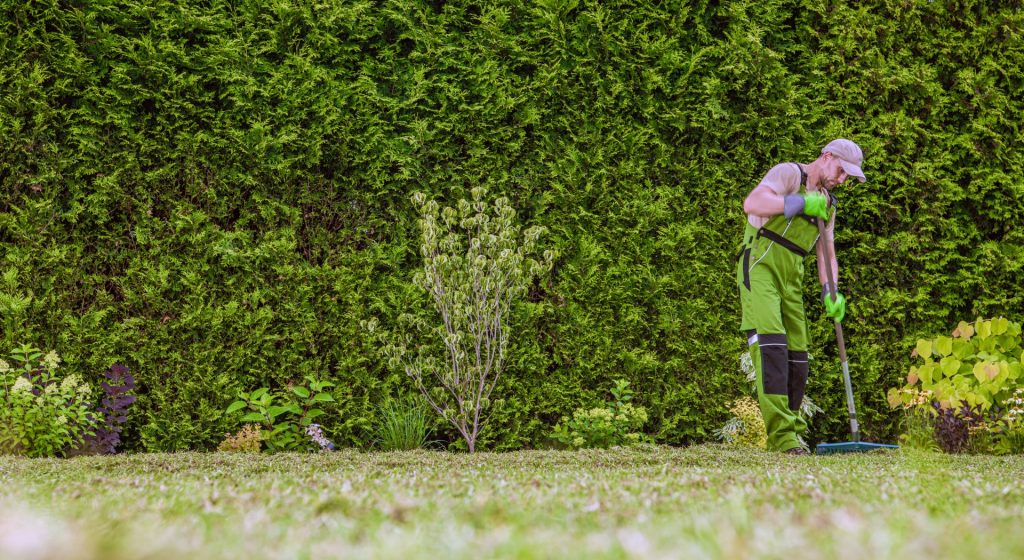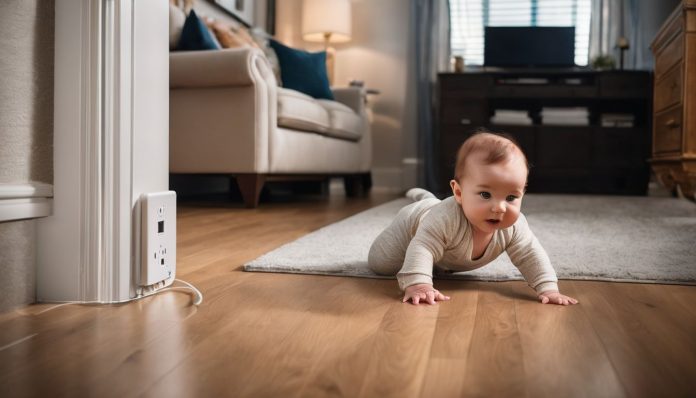Babyproofing significantly reduces the risk of serious injuries like falls, burns, or poisoning, creating a safer environment for curious youngsters. It provides peace of mind to parents, knowing potential dangers are mitigated.
This proactive step supports a child’s developmental need for exploration in a controlled, secure setting. Furthermore, it demonstrates foresight and responsibility, showing the parent’s commitment to their child’s well-being. It can also save families from potential financial burdens associated with medical treatment or repairs.
When to Start Baby Proofing
Expecting the unexpected is a common saying, particularly relevant regarding baby-proofing your home. As soon as babies start exploring their environment by crawling and pulling themselves up, they are at risk of common household hazards. They are also extremely playful, everything is a toy for them – keep that in mind every time!
Generally, this can occur between six to ten months of age. So until you make them do some fun gymnastics to consume that excess energy, this is what you’re dealing with.
That’s why child safety experts recommend starting the process of baby-proofing early, even before your little one begins to crawl. It gives parents ample time to secure heavy furniture to prevent tipping accidents and install edge and corner guards on sharp furniture corners throughout the house.
Furthermore, using Dr. Harvey Karp’s babyproofing guide can make your home safer for every age and stage in a child’s growth through practical tips.
General Tips for Baby Proofing Your Home
As a parent, your child’s safety is always at the top of your priority list. Here are some essential baby proofing tips to help you secure your home:
- Pulling large furniture against walls will limit access and reduce the chance of tip-over accidents.
- Childproofing should include covering all sharp edges and corners with corner and edge guards, which helps prevent injuries.
- I highly recommend installing safety gates at both the top and bottom of stairs to minimize risks of falls.
- With toddlers around, you can also install outlet covers or caps to protect them from potential electrical shocks.
- Storing cleaning products out of reach or in locked cupboards is another excellent way to ensure baby safety.
- Securing windows with window guards can significantly reduce the chances of accidental falls.
Room-by-Room Checklist
Let’s jump into a detailed room-by-room checklist for babyproofing, taking you through essential safety measures in the kitchen, living room, nursery, bathroom, laundry room, backyard and even the garage.
Kitchen
I experienced that, as a parent, my child’s safety is always a top priority. I also understand that the kitchen can be one of the most challenging rooms to childproof because it is full of potential hazards. Let’s go through this checklist together and ensure your kitchen becomes safer for your little ones.
- Start securing your cabinets and drawers immediately. Young children are naturally curious and will try to open everything they can reach. Use the recommended cabinet and drawer locks to protect them from harm.
- Pay special attention to covering all electrical outlets in your kitchen. Outlet covers are not just about aesthetics; they provide essential protection against electrical hazards for small hands exploring new territories.
- Get into the habit of keeping hazardous objects out of reach of children. This includes sharp objects like knives, breakables like glasses and ceramics, and potentially harmful cleaning chemicals.
- Take advantage of safety gates to designate off-limits areas in the kitchen, especially when cooking or baking.
- Regularly check for potential hazards in places you might overlook, such as corners or under tables where pieces may have fallen or broken off.
- Ensure all heavy items are stable and secure so they can’t tip over if leaned on or climbed over by an adventurous toddler.
Living Room
Making your living room safe for your little one is critical. Here’s a quick checklist:
- Check for any sharp edges on furniture and ensure they’re adequately padded to prevent injuries.
- Place covers over all electrical outlets in the room.
- Remove or secure objects, such as lamps or decorations, that can easily topple over.
- Install window guards if you have low windows.
- Anchor heavy furniture and TVs to the wall.
- Keep cords out of reach or secured with cord holders to prevent tugging or tripping hazards.
- Clear the floor regularly of small objects that are choking hazards.
As a parent, when my smallest was just 4 months old, I completely neglected the living room. We didn’t have much furniture then and some shelves were completely bolted to the wall at a higher distance. However, what I hadn’t imagined at the time was that my baby boy could simply pull the TV, the only accessible “furniture” there. My luck was that I was near him when he almost pulled it on its head, stopping it in time. Needless to say, that TV is bolted to the wall now.
Nursery
When I’m making a checklist for babyproofing every room in your house, the nursery comes up first. This is where your little ones will spend much of their time, so it’s important to prioritize safety here.

- First on the checklist is anchoring all furniture in the nursery. From dressers to bookshelves, ensure they are secure and won’t easily tip over.
- Next up is television safety. If there’s a TV in the nursery, fasten it securely to prevent accidents.
- Review crib safety measures. Keep cribs away from windows and ensure they have slat spacing less than 2 3/8 inches apart.
- Remove small toys or choke hazards from the baby’s reach.
- Install window guards to prevent children from falling out.
- Ensure all electrical outlets are covered when not in use.
- Keep cords and strings well out of the baby’s reach.
- Finally, ensure all medicines, creams, or ointments are stored properly.
Bathroom
Babyproofing a bathroom can seem overwhelming, but I’ve got you covered. In this section of our room-by-room checklist for babyproofing, we will get to the challenges of a bathroom.
- Install a toilet lock to prevent little explorers from playing with water or accidentally falling in.
- Use non-slip mats inside and outside the bathtub to avoid any slippery surface mishaps.
- Keep all cleaning supplies and medications out of children’s reach or, better yet, locked up.
- Apply soft guards to all sharp corners, especially on counter edges where small heads might bump into.
- Make sure all electrical outlets are covered with safety plugs to protect curious fingers.
- Install safety latches on drawers and cabinets so they can’t be opened by little hands.
- Ensure there’s a reliable door lock to keep toddlers out when not in use, but one that adults can easily open in emergencies.
Laundry Room
Securing the laundry room is an absolute must while childproofing your home.
- Start by installing child safety covers on electrical outlets, which often lurk closer to the floor in this house area. This measure follows the Safety Checklist for Living Spaces and the Baby-Proofing Checklist.
- Aim to keep all laundry detergents, stain removers and other potentially harmful chemicals out of reach. Placing a storage shelf above the height of the machine is an effective way.
- Make sure you remove items that could be potential hazards like stepladders or even a bucket filled with water.
- Try to move shampoo, conditioner, and soap off the floor too. Your child might find these colorful bottles appetizing!
- Adopt regular checks for potential dangers in this utility space where little ones don’t usually spend much time.
- Use safety gates to secure off-limit areas if needed.
Backyard
Creating a safe space for your child extends to the backyard as well.

- First, scan the area for potential hazards.
- Remove poisonous plants and mushrooms, which can pose a serious threat if ingested.
- Secure all gardening tools and chemicals in locked sheds or cabinets out of reach from children.
- Outfit any pond, pool, or water feature with safety fences to prevent accidental drowning.
- Check play equipment for wear and tear regularly.
- Ensure that swings, slides, and climbing frames are sturdy and have no sharp edges or splinters.
- Make it a habit to pick up small items that could pose choking hazards, such as pebbles, toy parts, or discarded food bits.
Garage
Your garage might not come to mind first when considering childproofing, but it holds several potential hazards for inquisitive kids. Here’s a checklist to maximize child safety while they are in or around the garage:
- Make sure the garage door opener is secure and unreachable for small hands.
- Always store dangerous chemicals, tools, or other hazardous items on high shelves or locked cabinets.
- Implement safety devices like cabinet locks, outlet covers, and door stoppers throughout your garage space to minimize risks.
- Maintain a clean and clutter-free garage floor to reduce the chances of tripping and falling accidents.
- Regularly check your garage for any emerging hazards or problem areas that need attention.
Other Tips for Childproofing Your Home
From designating certain areas as off-limits with safety gates to routinely checking for potential hazards, you can take numerous additional measures to enhance the safety of your home for children.
Using safety gates to designate off-limits areas
Safety gates are crucial tools in childproofing your home. They effectively prevent falls down stairs and block access to hazardous rooms, reducing potential risks for children. Sturdy, secure safety gates serve as effective barriers that can withstand a child’s curiosity or energy.
Installing safety gates properly is equally important. When affixed securely, they ensure child safety by providing a reliable restriction to specific areas of the house. Both room restrictions and stair safety can be significantly enhanced through the use of these indispensable parenting aids.
Checking for potential hazards regularly.
Regular assessments of your home for potential hazards can significantly enhance child safety. Safety precautions should be a routine, not a one-time task, because as your children grow, their capabilities change.
Their curious hands may eventually reach higher shelves or locked cabinets; hence, our childproofing strategies must evolve with them. Although every room demands scrutiny, the kitchen stands out because of its inherent risks – water, heat, and toxic substances are just a few hazards to keep an eye on.
Regularly reassess these spaces and shift items that pose risks outside their access area. By staying vigilant about household dangers and adapting our measures accordingly, we take vital steps towards accident prevention and overall injury prevention at home.
